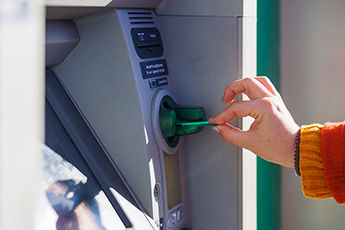If you’ve travelled by air recently, you may have enjoyed the latest upgrades in security that allow us to keep our shoes on, carry liquids freely, and not necessarily expose the contents of our bags. Technology enhancements, including computer tomography (CT) scanners, credential authentication technology (CAT), automated screening lanes, and facial recognition, focus on improving threat detection and improving the passenger experience. Similarly, technology now offers financial institutions (FIs) ways to step up their fraud detection while reducing customer friction.According to the Federal Trade Commission, American consumers lost $12.5B to fraud in 2024, a 25% increase over the previous 12 months. For FIs, the cost of fraud goes far beyond the actual loss, as it includes the cost of investigation, remediation, and reputational damage. LexisNexis estimates this cost to be $4.61 for every dollar of fraud, straining the resources of FIs and eroding customer trust. Fortunately, real-time fraud detection strategies can play a crucial role in helping community financial institutions (CFIs) to proactively identify and stop fraudulent transactions before they occur.
Key Benefits of Real-Time Fraud DetectionReal-time fraud detection relies on new technologies such as artificial intelligence (AI) and predictive analytics to track and flag unusual activity, machine learning (ML) to detect anomalies and adapt to evolving threats, and behavioral biometrics to identify differences in user behavior such as typing speed, mouse movements, and device usage. Adopting real-time fraud detection strategies can deliver substantial benefits to CFIs, such as:
Key Benefits of Real-Time Fraud DetectionReal-time fraud detection relies on new technologies such as artificial intelligence (AI) and predictive analytics to track and flag unusual activity, machine learning (ML) to detect anomalies and adapt to evolving threats, and behavioral biometrics to identify differences in user behavior such as typing speed, mouse movements, and device usage. Adopting real-time fraud detection strategies can deliver substantial benefits to CFIs, such as:
- Enhancing the customer experience. Early detection of fraudulent activity and a quick response help build customer confidence. Moreover, by reducing false positives, fewer legitimate customers face unnecessary hurdles.
- Protecting from fraud-related losses. By identifying suspicious transactions or activities in real time, institutions can prevent financial and data losses before they escalate. What’s more, they can reduce the costs associated with investigating and settling fraudulent transactions.
- Keeping up with fast-evolving fraud methods. Many real-time systems collect vast amounts of data and mine it for insights to predict new lines of attack from fraudsters.
- Shifting focus from fraud to growth. Using automated fraud detection and response strategies can free up an institution’s resources to focus on its core competencies.
Challenges of Implementing Real-Time Fraud DetectionAs with all new system implementations, CFIs can face several challenges when implementing real-time fraud detection strategies:
- Data privacy and compliance. Protecting customer data from unauthorized access is essential, and organizations need to comply with the relevant data privacy laws and industry regulations such as GDPR or GLBA. Encryption tools, strict access controls, and data anonymization methods can help keep sensitive information safe.
- Integration with legacy systems. Older core banking platforms may not support real-time data processing or integration with modern, API-based fraud detection tools. Implementing these systems may require significant upgrades, adding to the cost and complexity.
- Data limitations. For real-time fraud detection to function effectively, institutions need high volumes of quality datasets that are clean, reliable, and consistent.
Five Use Cases for CFIs
- Mobile deposits protection. According to Cornerstone Advisors, mobile deposit adoption rose by 50% in the last three years, resulting in increased fraud risk. Counterfeit checks lead the way, followed by forged endorsements, duplicate check deposits, forged maker signatures, and altered checks. Real-time check fraud detection systems enable CFIs to assess and act on suspicious deposits instantly, instead of relying on blanket holds or identifying fraud only after funds have been withdrawn.
- Real-time transaction monitoring. Fraud analytics can monitor transactions — such as card payments, wire transfers, ACH, and P2P payments — and flag any suspicious activity based on spending patterns, geolocation data, and past behavior, allowing the institution to block the transaction before funds are lost.
- Safeguarding credit card and ecommerce transactions. The rise in ecommerce has brought a huge increase in card fraud, particularly card-not-present fraud, which reached over $10B in 2024 and accounted for 74% of payment card fraud. Analytics and ML models can help detect these threats by analyzing transaction context, merchant behavior, and unusual payment patterns, allowing the CFI to prevent unauthorized payments.
- Insider fraud monitoring. Employees with elevated access may exploit their privileges or collaborate with external parties to commit fraud. AI-driven fraud analytics help uncover this type of activity by tracking irregular actions, such as repeated overrides or unauthorized modifications.
- Anti-money laundering (AML) compliance. Money laundering hides illicit funds through layered transactions. Fraud analytics and AI-powered AML tools can help CFIs detect suspicious patterns, automate reporting, and reduce false positives to ensure compliance.
AI-powered fraud detection is revolutionizing financial security by enabling real-time protection of banking transactions through ML and behavioral analytics, particularly in the areas of mobile deposits, real-time transaction monitoring, credit card payments, insider fraud, and AML compliance. While challenges like data privacy, integration with legacy systems, and data limitations exist, the advantages — stronger security, improved customer trust, and loss prevention — make real-time fraud detection essential for CFIs to stay ahead of evolving cyber threats.




